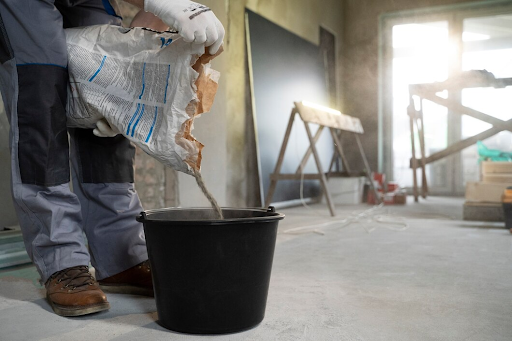In the realm of home improvement and construction, concrete contractors pouring at home is gaining popularity. Many homeowners are embarking on do-it-yourself concrete projects, paving their driveways, creating patios and building concrete walls. However, as straight-forward as these tasks may appear, they require a deep understanding of the concrete pouring process and the essential tools needed to ensure the project’s success. We have compiled this guide to help you understand these tools and the integral role they play in successful concrete pouring at home.
The significance of understanding and executing the concrete pouring process cannot be overemphasized. Particularly, the significance of preparing the site prior to concrete pouring is monumental to the success of your concrete pouring projects. A badly prepared site can result in a flawed outcome, cracked concrete, or uneven slabs. Appreciating and implementing this crucial step is a huge leap towards a remarkable outcome.
It is common for people to equate concrete pouring with merely mixing cement, aggregate, and water. Nevertheless, this view omits the importance of professional concrete tools which are equally crucial to the process. Below are some essential tools necessary for successful concrete pouring:
Concrete Mixer
A crucial asset in concrete projects, a concrete mixer efficiently blends cement, sand or gravel, and water to create a homogeneous concrete mixture. Beyond time and labor savings, these machines guarantee the uniformity and thorough mixing essential for ensuring the structural integrity and quality of the final concrete product.
Floats and Trowels
Floats and trowels come into play after pouring the concrete. They smooth the surface and make sure that it’s even throughout. A float is used to level and smooth the surface of the concrete immediately after it is screened, while a trowel is used for final finishing of the surface after it has partially hardened.
Edgers
Ensuring proper edges is paramount for the longevity of concrete structures or surfaces. An edging tool plays a crucial role in rounding off the edges of freshly poured concrete, serving as a preventive measure against potential chipping and cracking over time. This meticulous finishing touch contributes to the overall durability and resilience of the concrete construction.
Wheelbarrow
In home concrete pouring endeavors, a wheelbarrow stands as an indispensable tool for transporting mixed concrete from the mixer to the pouring site. The reliability of a sturdy wheelbarrow is crucial in facilitating the swift and efficient transfer of concrete, streamlining the overall process of delivering the mixture precisely where it’s needed for construction or renovation projects.

Shovels and Hoes
These tools are pivotal for maneuvering concrete into position during the pouring and spreading stages. They not only facilitate the precise placement of the concrete but also play a crucial role in pushing the mixture toward the edges, ensuring an even and well-distributed surface for a more robust and aesthetically pleasing final result.
Screeds
A screed serves as a straight edge tool essential for leveling and striking off concrete surfaces. Its primary function involves eliminating excess concrete, meticulously bringing the top surface to the correct grade.
Rubber Gloves and Boots
Prioritizing safety is paramount when working with concrete, as it has the potential to cause skin irritation and burns. Concrete professionals strongly advocate for the use of protective gloves and boots during both the pouring and finishing stages to safeguard against any adverse effects, ensuring a secure and injury-free working environment.
Reinforcing Mesh
This is an essential tool when pouring concrete slabs or driveways. The reinforcing mesh provides strength to the structure and prevents it from cracking due to temperature changes or ground movement.
Vibrators
Ensuring that your concrete is free of air pockets is essential to its strength and final appearance. Concrete vibrators remove air bubbles from the mixture, resulting in a denser and more robust final product.
Buckets and Cans
For smaller projects, buckets and cans can be used to measure and mix smaller quantities of concrete, ensuring precision and saving resources.
Embarking on a home concrete pouring project necessitates meticulous planning, a deep understanding of the process, and the acquisition of the right tools. Proper planning ensures that every step is thoughtfully considered, minimizing potential setbacks. A comprehensive knowledge of the pouring process is equally vital to navigate complexities and ensure a successful outcome. Investing in the essential tools not only facilitates a smooth execution but also lays the foundation for achieving magnificent and durable results, turning your concrete project into a testament of careful preparation and quality craftsmanship.
Final Thoughts
While it might feel complex initially, concrete pouring at home can be a rewarding endeavor with stunning outcomes. Keep in mind that, the significance of preparing the site prior to concrete pouring is crucial, forming a solid supervision of your project’s final success. Remember, the beauty in concrete pouring is not only in the result but also in the process. Happy home improvements!





